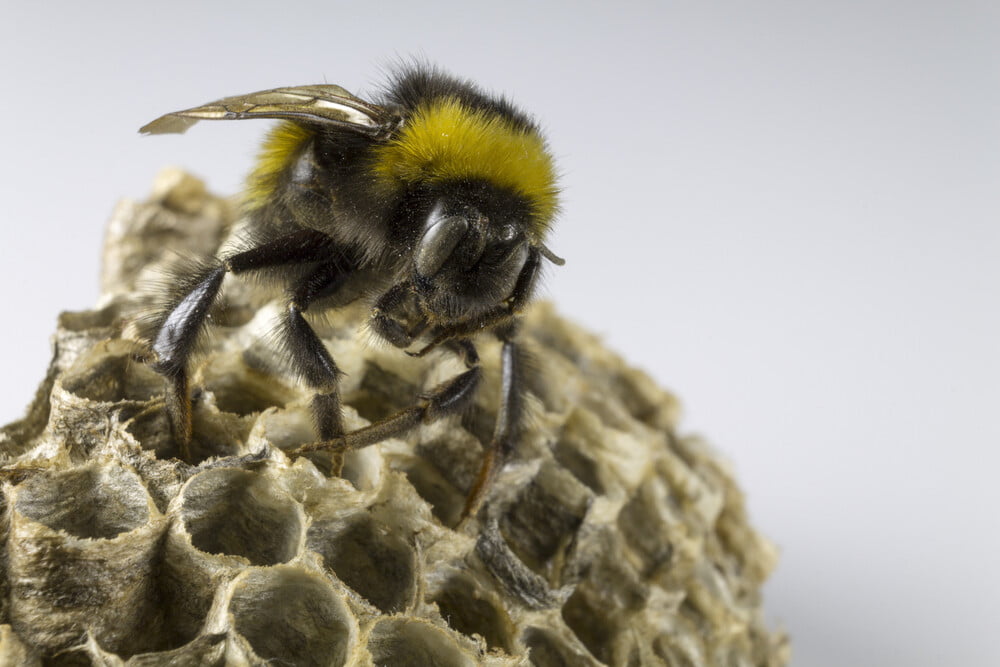
Dealing with the presence of wasp nests around your home can be a daunting task, especially considering the potential dangers they pose. However, with the help of professional wasp exterminators, you can safely and effectively rid your property of these pests. In this detailed guide, we will delve deeper into the process of safely removing wasp nests and provide valuable insights into the methods employed by experts in the field.
Identifying the Threat
Before embarking on the nest removal process, it’s crucial to accurately identify the species of wasp inhabiting the nest. Common varieties include yellow jackets, paper wasps, and hornets, each with its nesting habits and behaviour patterns. Our trained professionals possess the expertise to discern between different species and assess the level of threat posed by the nest. Identification is often based on characteristics such as size, colouration, and nesting behaviour. Once the species is identified, our team can develop a targeted strategy for wasp removal.
Planning the Removal
Effective wasp nest removal requires careful planning and preparation to ensure optimal results. Factors such as the size and location of the nest, as well as environmental considerations, are taken into account during the planning phase. Our experienced technicians conduct a thorough assessment of the situation and devise a customized plan of action tailored to the specific circumstances. This may involve determining the best time of day to perform the removal, considering weather conditions, and assessing potential risks to nearby structures or inhabitants.
Safety Precautions
Safety is paramount during any wasp extermination procedure to protect both occupants of the property and our team members. Our professionals undergo extensive training in pest control safety protocols and wear appropriate protective gear, including bee suits, gloves, and face shields, to minimize the risk of stings and other potential hazards. Additionally, our technicians are trained to recognize signs of allergic reactions and are equipped with first aid supplies in case of emergencies. We also take measures to ensure the safety of pets and other wildlife in the vicinity of the treatment area.
Utilizing Specialized Equipment
To effectively remove wasp nests, specialized equipment and tools are employed to access hard-to-reach areas and eradicate the colony safely. Long-reaching poles fitted with nest removal attachments enable our technicians to reach elevated nests without endangering themselves. Additionally, insecticidal sprays and dusts formulated specifically for wasp extermination are applied to eliminate the colony. Our technicians are trained in the proper use of these products to ensure maximum effectiveness while minimizing environmental impact. We also utilize protective barriers and containment measures to prevent the spread of pesticides beyond the treatment area.
Environmental Considerations
As stewards of the environment, we are committed to employing eco-friendly wasp extermination methods that minimize harm to beneficial pollinators and other non-target species. Our approach focuses on the targeted application of pesticides to the nest site, reducing the risk of collateral damage to surrounding ecosystems. By carefully calibrating our methods, we ensure effective nest removal while preserving biodiversity. Additionally, we may recommend alternative solutions such as nest relocation or habitat modification to deter future nesting activity. Our goal is to achieve long-term pest management solutions that minimize environmental impact and promote ecological sustainability.
Post-Removal Assessment
Following the successful removal of the wasp nest, our technicians conduct a thorough inspection of the area to confirm complete eradication and identify any remaining nest remnants. This meticulous assessment ensures that no residual wasp activity persists, providing peace of mind to property occupants and preventing future infestations. Our technicians may also provide recommendations for preventative measures to minimize the risk of future infestations, such as sealing entry points and removing attractants. We believe in proactive pest management strategies that address underlying factors contributing to infestations and reduce the need for future interventions.
Additional Techniques for Wasp Nest Removal
In addition to the traditional methods of wasp nest removal, several alternative techniques and preventive measures can be employed to address wasp infestations and minimize the risk of future nests. These techniques include:
1. Nest Relocation
Rather than destroying the wasp nest, some homeowners may opt to relocate it to a less populated area. This technique involves carefully removing the nest and transferring it to a new location, such as a wooded area or unused outbuilding. However, it’s essential to exercise caution when relocating wasp nests, as disturbing the colony can provoke aggressive behaviour from the wasps. Professional wasp exterminator have the expertise and equipment necessary to safely relocate nests without endangering themselves or others.
2. Habitat Modification
Making modifications to your property can help deter wasp nesting and reduce the likelihood of future infestations. This may include trimming overgrown vegetation, sealing cracks and crevices in building exteriors and removing sources of food and water that may attract wasps. By eliminating potential nesting sites and making your property less hospitable to wasps, you can significantly reduce the risk of wasp infestations.
3. Wasp Traps
Wasp traps are devices designed to attract and capture wasps, thereby reducing their numbers and preventing them from building nests. These traps typically utilize sweet-smelling baits to lure wasps inside, where they become trapped and unable to escape. While wasp traps can be effective at controlling small populations of wasps, they may not be sufficient for large infestations or established colonies. Professional wasp exterminators can assess the severity of the infestation and recommend appropriate measures for wasp control.
4. Chemical-Free Solutions
For homeowners concerned about the use of chemical pesticides, there are several chemical-free solutions available for wasp control. These may include natural repellents such as peppermint oil or vinegar, which can be sprayed around nesting areas to deter wasps. Additionally, physical barriers such as mesh screens or netting can be installed to prevent wasps from accessing certain areas of your property. While these methods may be less effective than chemical pesticides, they can provide a non-toxic alternative for wasp management.
Conclusion
By employing a combination of traditional and alternative techniques for wasp nest removal and control, homeowners can effectively manage wasp infestations and safeguard their property against future nests. Whether opting for professional extermination services or implementing DIY solutions, it’s essential to prioritize safety and environmental responsibility. By working with experienced professionals and adopting eco-friendly practices, you can achieve long-term wasp management solutions that protect your home and the environment.







